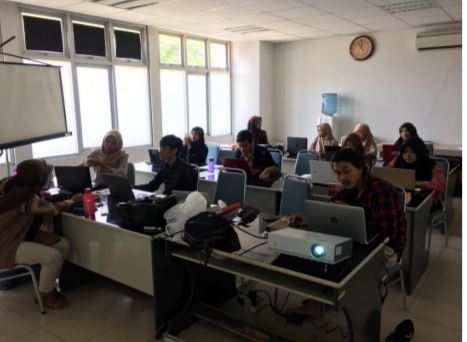
The 7.4 SR earthquake hitting Palu, Sigi, and Donggala in Central Sulawesi on 28 September 2018 has taken thousands of lives. The earthquake and tsunami have damaged many infrastructures. Humanitarian aid has since flowed to the areas in the form of logistics or mapping of damaged buildings.
Faculty of Geography UGM has actively participated in the emergency response in Palu by deploying a Task Force – Spatial Data Support, supported by PUSPICS and Geographical Information Science Department to provide spatial data so that aid distribution will be more effective and efficient.
Based on this mapping, as many as 182 refugee camps have been uploaded through Google My Maps. “These data are used to coordinate humanitarian aid together with village chiefs of Palu and Donggala,” said Prof Dr. Hartono, team member who is also chairman of Indonesian Geography Association, on Friday (5/10) to journalists.
The team also produced a Damage Assessment Map to see the impacted areas as a reference for recovery phase or post-disaster reconstruction. The map can help the government and NGOs to prioritise aid to impacted areas, The data used high resolution satellite image. Analysis is conducted by interpreting the image visually using record image before and after the earthquake.
“The team has completed a Damage Assessment Map that includes impacted areas on Talise beach in Palu,” he said.
He said a total of 1,965 buildings have been mapped in Zone 50S. This spot includes 1,085 collapsed buildings and 878 damaged buildings. “The damage figures cover a 10,5 km2 size of land that is observed,” he said.
In an area measuring 7.5 km2, there are a total of 2,001 buildings being mapped. There are 213 damaged buildings and 1,788 collapsed buildings. “We hope that the map of refugees distribution can be used well by all stakeholders, specially government and volunteers who will distribute aid to the people of Palu,” Hartono said.

